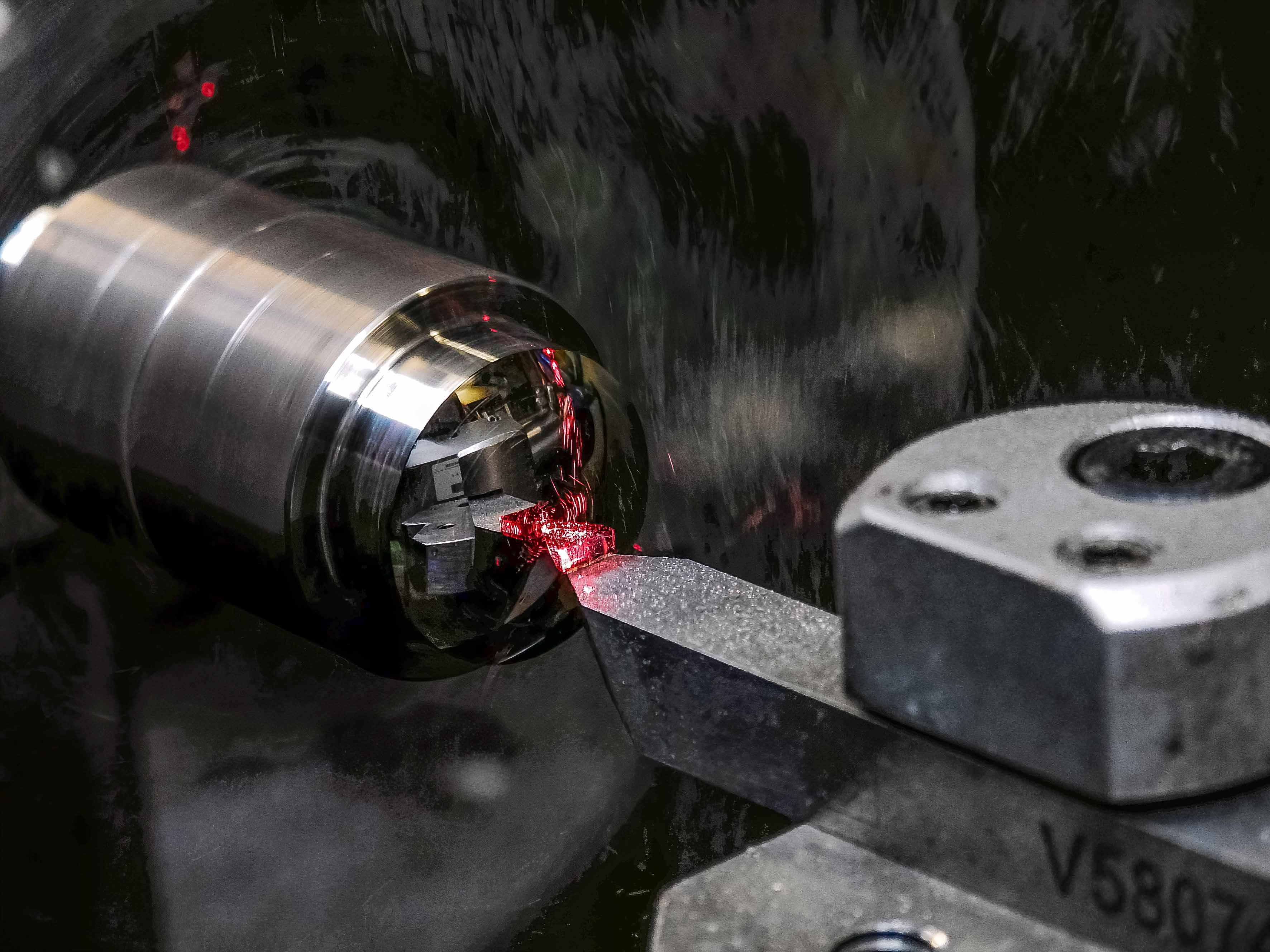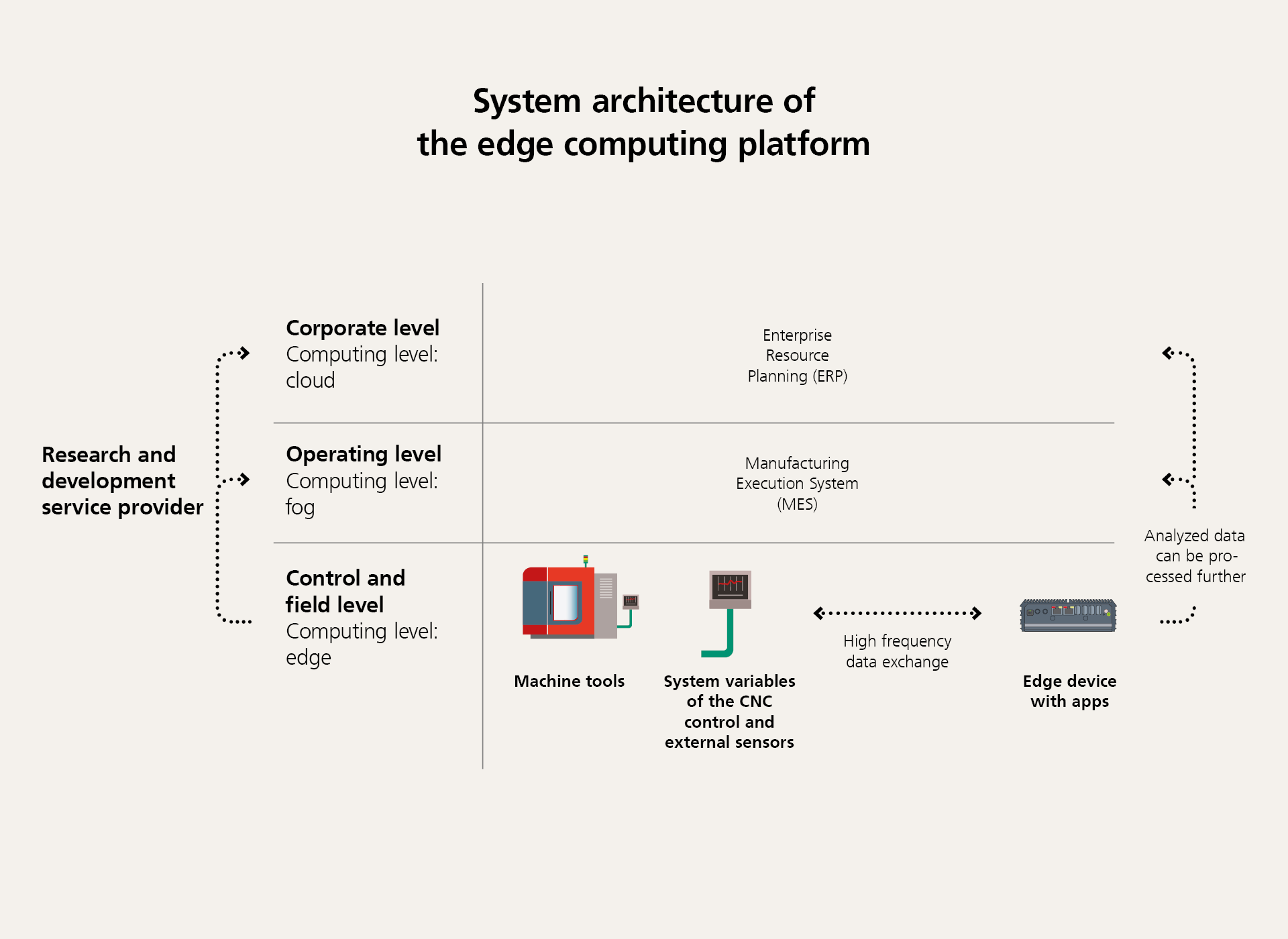AI and Edge: A Powerful Duo
The data specialists at PTZ have implemented a digital retrofit of this kind – equipping machines with state-of-the-art sensor and communication technology – by means of an edge computing solution using artificial intelligence. In edge computing, data is collected and stored directly at the point of origin, the edge. This means that data does not have to travel long distances to central data centers, but can be processed without much delay. This is important because short response times are essential in automated production and the delay time of cloud access to local AI applications is often too high.
Since the AI models in edge computing are not executed in the cloud but on the edge device, hardware with high computing power is one of the cornerstones. The project used an industrial PC with two ethernet ports which is connected directly to the machine controller via an internal high-frequency interface.
With the help of the edge device and in conjunction with a novel edge platform, the PTZ team was able to capture around one hundred different system variables of a machine tool. This includes data relating to spindle speed, tooth feed, cutting depth, feed rate, contour deviations and indirect information on component quality. In addition, synchronously with these parameters and up to 30,000 times per second, data from external sensors such as cameras or force sensors can be read out and information about tool life and error messages can be retrieved.
The unstructured flood of raw data collected this way is systematically evaluated and transformed into meaningful insights – in other words, into economic added value – speusing AI on the edge platform: Intelligent data analysis can reveal hidden optimization potential, identify sources of error, and detect machine wear and defects at an early stage.
Other interfaces of the edge device, including Open Platform Communications Unified Architecture (OPC UA), are used to forward the data to higher-level systems such as the Manufacturing Execution System (MES) or Enterprise Resource Planning (ERP) of a company, to data lakes for storing large amounts of structured data, and to an enterprise’s own servers or cloud platforms. The impact of data traffic on the machine tool CPU, on the other hand, is reduced to a minimum because the actual processing takes place on the edge device. This means that the edge device can be installed in existing machine tools without interfering with their actual control task.
Furthermore, it is possible to influence the machining parameters of the machine tool via a feedback loop, or in other words: to report commands back to the machine controller. The researchers are already working on outsourcing the first parts of this process to a developed AI.
Using AI to Detect Tool Wear
Once the edge device has been successfully installed on the machine tool, apps can help to display the machine data simply and clearly. New applications or security patches can be implemented. App stores already provide applications that focus on monitoring tool condition and predicting tool wear. This allows users to make accurate decisions based on an AI model.
Edge Apps in Use
As service providers, the data experts at PTZ also develop customized apps for specific use cases of small and medium-sized enterprises. For example, it is conceivable to extract information from data-intensive experiments in the form of an app that is then used on a machine tool with a specially adapted edge device. Similarly, data from the tool usage history can be merged with the quality data of manufactured components and used to optimize tool geometries and materials. Intelligent online monitoring of the machine tool is also possible: Production errors, for example from pre-processes, are thus instantly detected and can be rectified immediately.
 Fraunhofer Institute for Production Systems and Design Technology
Fraunhofer Institute for Production Systems and Design Technology

